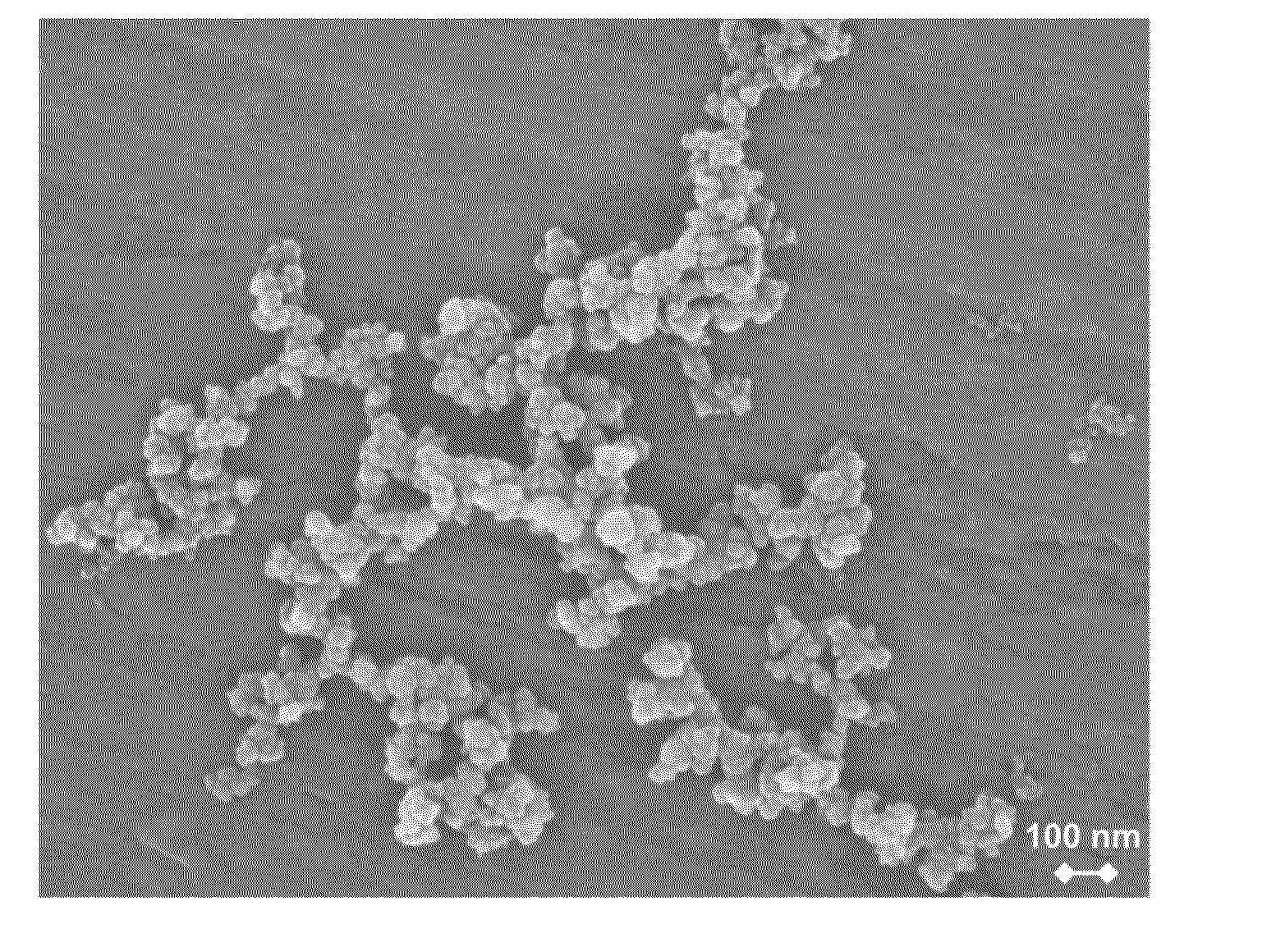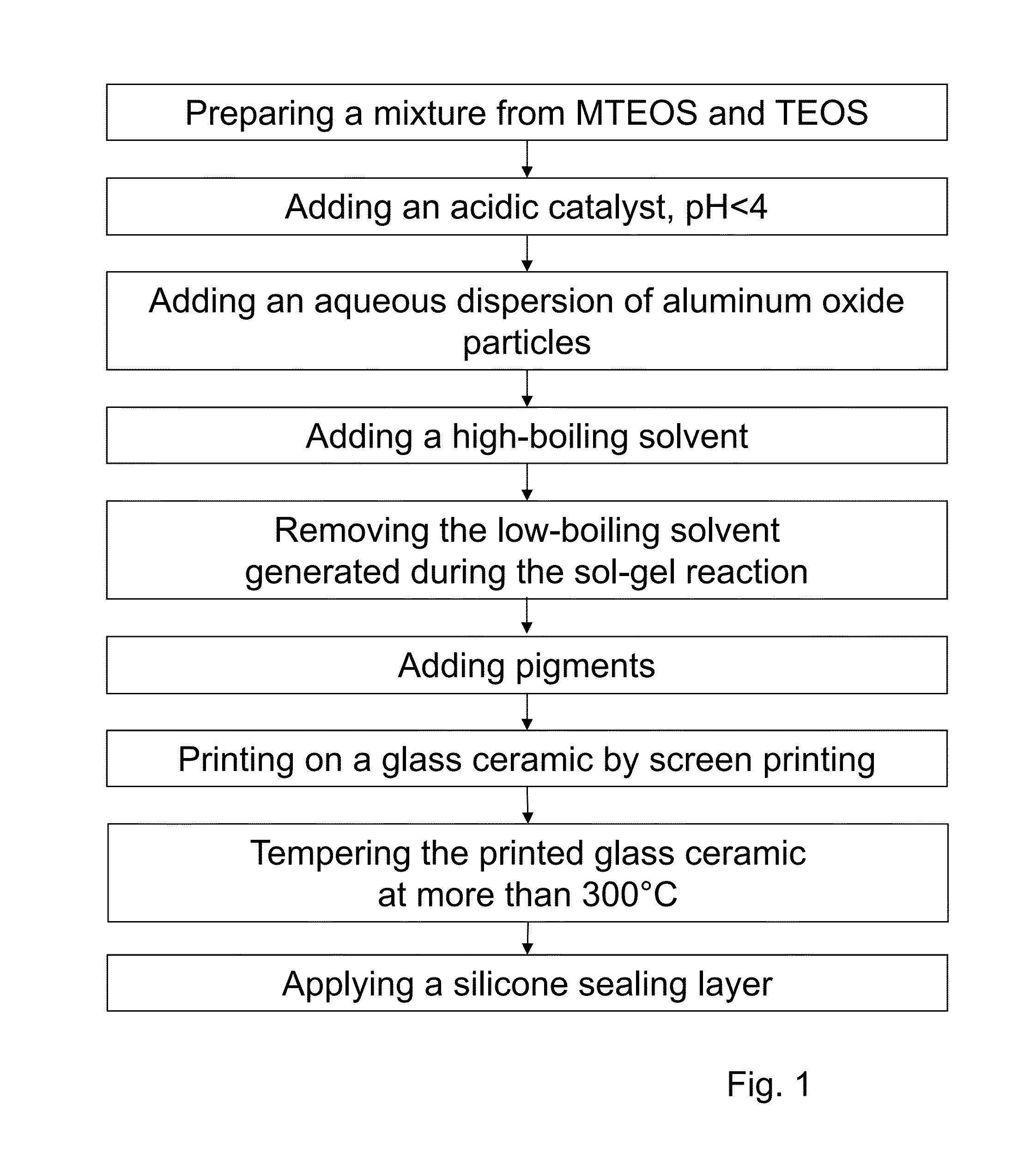Sol-gel ink and method for producing same
a technology of gel ink and pigment, applied in the field of pigment ink, can solve the problems of time-consuming and complex, inability to use effect pigments for coloration purposes, and inability to achieve partial coating of a substrate, for example, which may be accomplished using masks, and achieves the effect of less prone to gelling and long pot li
- Summary
- Abstract
- Description
- Claims
- Application Information
AI Technical Summary
Benefits of technology
Problems solved by technology
Method used
Image
Examples
example 1
[0128]For the synthesis of the sol-gel precursor, MTEOS and TEOS are provided in a molar ratio of 4:1, for example, and are adjusted to a pH of about 2 by addition of an acid, in particular para-toluenesulfonic acid.
[0129]Then, a 30% aqueous dispersion of Al2O3 particles (30% solids content) (diameter of about 120 nm) is added under vigorous stirring. The ROR value is 0.425.
[0130]For the synthesis of the matrix, the sol-gel precursor having a condensation degree of 85% and a T3 / (T2+T1+T0) ratio of about 1.8 and a (Q4+Q3) / (Q2+Q1+Q0) ratio of about 3.0 is combined with a solvent mixture of terpineol and n-butyl acetate in a ratio of 4:1, for example.
[0131]Here, the solvent content is 40%, for example. By removing the ethanol, the sol-gel binder is obtained with a content of T3 groups of about 55% and a content of Q4 groups of about 10%. The degree of condensation is about 90±5% over a period of six months when stored at 7° C.
[0132]For the synthesis of the ink, the matrix (60-65%), DEG...
example 2
[0135]For the synthesis of the trisol, MTEOS and TEOS are provided in a molar ratio of 4:1, for example, and are adjusted to a pH of about 2 by adding para-toluenesulfonic acid. Then, a 30% aqueous dispersion of Al2O3 particles is added under vigorous stirring. The ROR value is 0.375.
[0136]For the synthesis of the matrix, the sol-gel precursor having a condensation degree of 76% and a T3 / (T2+T1+T0) ratio of about 1.0 and a (Q4+Q3) / (Q2+Q1+Q0) ratio of about 1.5 is combined with a solvent mixture of terpineol and n-butyl acetate in a ratio of 4:1, for example.
[0137]Here, the solvent content is 40%, for example. By removing the ethanol, the sol-gel binder is obtained with a content of T3 groups of about 45% and a content of Q4 groups of about 5 to 7%. The degree of condensation is about 78%.
[0138]The degree of condensation is preserved below 85% for six months when stored at 7° C.
[0139]For the synthesis of the ink, the matrix (60-65%), DEGMEE (about 9%), mica pigments of a size of 15 μ...
PUM
| Property | Measurement | Unit |
|---|---|---|
| boiling point | aaaaa | aaaaa |
| mean particle size | aaaaa | aaaaa |
| mean particle size | aaaaa | aaaaa |
Abstract
Description
Claims
Application Information
 Login to View More
Login to View More - R&D
- Intellectual Property
- Life Sciences
- Materials
- Tech Scout
- Unparalleled Data Quality
- Higher Quality Content
- 60% Fewer Hallucinations
Browse by: Latest US Patents, China's latest patents, Technical Efficacy Thesaurus, Application Domain, Technology Topic, Popular Technical Reports.
© 2025 PatSnap. All rights reserved.Legal|Privacy policy|Modern Slavery Act Transparency Statement|Sitemap|About US| Contact US: help@patsnap.com



